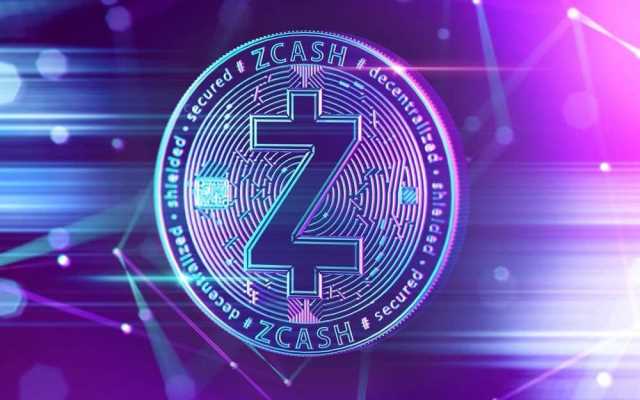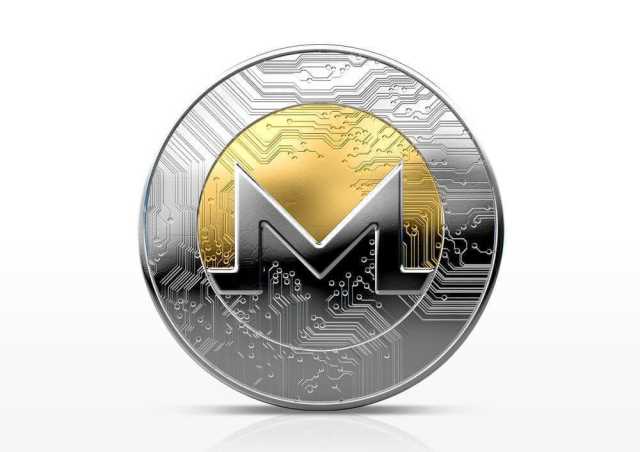Category: Cryptocurrency exchange
Ethereum Wikipedia

Many developers were drawn to this idea because these new applications would be accessible to a global audience, highly secure, and much faster to build because there are no intermediary services to integrate. In any case, our original promise that the issuance rate will not exceed 26.00% per year, and the goal that the eventual final issuance will be much lower (likely 0-3% per year) with proof of stake, will both be kept. The Ethereum blockchain launched in July 2015 under the codename “Frontier.” This first iteration of Ethereum used the same proof-of-work (PoW) consensus mechanism on the Bitcoin network. In this system, computers have to solve complex algorithmic problems to post new transactions on the blockchain.
Who is Vitalik Buterin, Ethereum Creator?
Whichever computer solves this puzzle first receives crypto rewards in the form of ETH. Countless cryptocurrencies have come and gone, but Ethereum has grown, leading to an explosing of projects leveraging the technology. At the time of writing, Ethereum’s Ether coin (ETH) has the second-largest market cap after Bitcoin (BTC). Current estimates suggest there’s around $27 billion total value locked (TVL) in Ethereum projects (at the time of writing), representing 60% of the entire DeFi (decentralized finance) ecosystem. For comparison, the next largest blockchains—TRON and the BNB Smart Chain—each have $4 billion in TVL. Buterin’s interest in broadening Bitcoin’s scope led him to pursue a Turing-complete programming language to realize his vision.
- At this stage, he left university to travel the world for several months to connect with Bitcoin developers.
- Amir Chetrit had a working relationship with Buterin during his stint at Colored Coins.
- He got in touch with Buterin in 2011, and they decided to set up Bitcoin Magazine, and then worked together on Egora, a decentralized eBay for Bitcoin.
- Forks are when major technical upgrades or changes need to be made to the network – they typically stem from Ethereum Improvement Proposals (EIPs) and change the “rules” of the protocol.
- Similar changes have been performed on the Byzantium, Constantinople and London network upgrades.
Was Vitalik Buterin a Cypherpunk?
The Berlin upgrade optimized gas cost for certain EVM actions, and increases support for multiple transaction types. Vitalik’s authority is most evident from his Twitter account, through which he participates in discussions of all kinds. Vitalik is not against Elon’s takeover per se, but rather opposes the enthusiasm generated by the social media takeover. This is not the case with Jack Dorsey (former Twitter CEO) and Elon Musk, but Vitalik fears a scenario in which ethically compromised organisations or governments take control of social media. This discussion, which took place in Zug (Switzerland) in June 2014, saw the first of many separations from Vitalik. Indeed, already in 2015, Alisie left the Ethereum Foundation to devote himself to Akasha, a social infrastructure for Ethereum.

Activity Since Ethereum’s Launch
“NFTs can represent much more of who you are and not just what you can afford,” he writes. Three days after the music stops at ETHDenver, Buterin’s attention turns across the Who Invented Ethereum world, back to the region where he was born. In the war launched by Russian President Vladimir Putin, cryptocurrency almost immediately became a tool of Ukrainian resistance.
London EIPsOfficial improvements included in this upgrade.More
Buterin’s whitepaper, written after three years spent exploring the emerging crypto sector, was his response to the limitations of Bitcoin, and proposed a platform enabling any decentralized, censorship-resistant application imaginable. There is no guarantee that any crypto asset will have at any time in the future certain value (if any) or market liquidity. Crypto assets are at risk of losing substantial (or all) value within a short time period. Those who know Buterin well have noticed a philosophical shift over the years. One of Buterin’s recent posts calls for the creation of a new type of NFT, based not on monetary value but on participation and identity. For instance, the allocation of votes in an organization might be determined by the commitment an individual has shown to the group, as opposed to the number of tokens they own.
At the early stage of development, Vitalik Buterin onboarded top developers and entrepreneurs to steer the formative stage of Ethereum. These individuals became co-founders of the project and contributed their quota to its success. Through high school and into college, Buterin honed his programming abilities and connected with influential mentors like the cryptographer Ian Goldberg, known for his involvement with the Tor Project among other things.

- Charles Hoskinson wanted to be a mathematician, before becoming disillusioned with the profession and taking an increasing interest in Bitcoin.
- To turn the Ethereum Whitepaper into a reality, Buterin explained his vision for a new blockchain at 2014’s North American Bitcoin Conference.
- This happened on November 27, meaning the Beacon Chain started producing blocks on December 1, 2020.
- The young programmer created an initial white paper for this concept, which he called Ethereum, in 2013.
Here’s what they’re up to five years after the start of their breathtaking venture.
Staking deposit contract deployed
We are also evaluating the possibility of introducing a more formal and inclusive process for agreeing on protocol upgrades and welcome input from client developers on this. And there are more announcements both from ourselves and others that will be following soon. The most crucial tool in doing so is sharding, which Buterin says will lead to faster response times and eventually lower fees to around a nickel. But as the EF works on sharding, users are already flocking to centralized blockchains and platforms that run faster and work better. The irony is that despite all of Buterin’s cachet, he may not have the ability to prevent Ethereum from veering off course.
This is achieved through the introduction of data “blobs” which enables rollups to post data to Mainnet for a short period of time. This results in significantly lower transaction fees for users of layer 2 rollups. The Ethereum 2.0 update, in a nutshell, envisages a switch from Proof of Work (PoW) to Proof of Stake (PoS), a momentous change in the consensus mechanism for creating blocks.
Proof-of-Work PoW vs Proof-of-Stake PoS

Study each platform carefully to make sure you stake the asset that best fits your risk profile. Any crypto investment is speculative, and some stackable tokens can be even more volatile than established assets such as bitcoin. Put simply, in some of these cryptos you risk losing all of your investment. Don’t let your search for yield to cloud your long-term thinking about the value of a base asset. When a group of validators representing at least two-thirds of the blockchain’s overall voting power submits a vote to generate the next block, the block is considered verified.

Proof of Work VS Proof of Stake: Which One Is Better?
In a proof-of-stake (PoS) scenario, there are no miners competing to win the privilege of adding a new block to the chain. Instead, anyone participating in the network can be included in the process of adding blocks by “staking” (versus mining) some amount of coins. In a PoW environment, miners (basically, computers across the globe participating in the network) compete to “mine” new blocks.
Proof of stake cons
Additionally, because these networks are not as energy intensive, which is necessary under PoW as a disincentive to bad actors, PoS networks are far more scalable. For instance, Ethereum’s current setup can handle a little more than a dozen transactions per second. Once https://www.tokenexus.com/ its transition to PoS is completed in a couple of years that will scale to 100,000. Once trust or loss happens people will exit the cryptocurrency market in droves. The floats and liquidity are low and these will be driven down rapidly (remember dot.com bubble/bust).
Most popular proof-of-stake blockchains
When blockchains are decentralized, meaning no entity governs or monitors transactions, there has to be a reliable way to verify each transaction. Although blockchain technology is still in its early stages, it’s seen by many as the future of digital tech, a disruption that could change the world much as the Internet has done. Proof of Stake vs Proof of Work If you plan to invest in crypto or blockchain tech, it’s critical to understand the two distinct validation procedures, as each could take the development of blockchain technology in different directions. Another potential solution lies in implementing technological advancements that optimize mining hardware’s efficiency.
- Nevertheless, the scalability issues that Proof of Work has caused Bitcoin is also a problem for Ethereum.
- In conclusion, the debate between proof of work (PoW) and proof of stake (PoS) consensus mechanisms is a critical one in the world of blockchain technology.
- If users don’t abide by the consensus rules, their stake will be forfeited.
- Since cryptocurrency is decentralized, computers must verify transactions to confirm they are legitimate.
- You might be wondering why somebody would buy hardware and consume lots of electricity just to help confirm Bitcoin transactions.
- Anyway, in this Proof of Work VS Proof of Stake guide, I am going to start by explaining the basics of each model, followed by which popular blockchains have adopted them.
The proof of work consensus algorithm uses complex problems for miners to solve using high-powered computers. The first miner to complete the puzzle or cryptographic equation gets the authority to add new blocks to the blockchain for transactions. When the block is authenticated by a miner, the digital currency is then added to the blockchain. In conclusion, the debate between proof of work (PoW) and proof of stake (PoS) consensus mechanisms is a critical one in the world of blockchain technology.
- Winners of this race are then allowed to add a new block of transactions to the chain.
- Some cryptocurrencies have started exploring hybrid consensus mechanisms that combine the benefits of both PoW and PoS.
- Meanwhile, environmental campaign groups such as Greenpeace have pushed for Bitcoin to switch to proof-of-stake.
- In a proof-of-stake (PoS) scenario, there are no miners competing to win the privilege of adding a new block to the chain.
- In addition, the transaction fees are considerably less than those on proof of work blockchains.
- Proof-of-stake and proof-of-work both have pros and cons, and it’s important to acknowledge that no system is perfect.
What do you think are the main advantages of the Proof-of-Stake consensus mechanism for cryptocurrencies?
This is because of rising mining cost in which big mining farm is more efficient and the less efficient mining farm will fail to profit from higher difficulty. Proof Of Stake seems to be leading towards a scenario where the power would rest in the hands of a few. I would say that the comments on this article are an indication of what the general public thinks about POS vs POW. If Vitalik Buteren does not take the opportunity to explain to the average joe why we shouldn’t think of POS as a means to an end for wealthy investors to become wealthier, than he is agreeing that it is true.
Proof-of-stake systems only have initial upfront costs to participate, leaving them more open to attack. Token markets can be cornered by an entity with deep pockets, allowing them to amass a majority of tokens. Mining requires a great deal of electricity and secures the network by ensuring that only those that can prove they have expended resources are granted the right to append a new set of transactions to the blockchain. I have also listed some of the solutions that the Proof of Stake model brings to the cryptocurrency industry. However, as blockchain technology becomes more advanced, lots of other consensus algorithms are hitting the market, all with their pros and cons.
How does the network choose?

Unlike PoW, which had a competitive validation process, PoS chose validators based on the amount of cryptocurrency they held and their willingness to “stake” as collateral. The higher the stake, the higher the chances of being selected to add the new block of transactions to the ledger. Simply put, a cryptocurrency owner needs to own the most native crypto coins on a blockchain to be selected as a validator.
